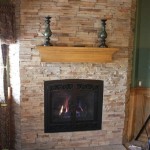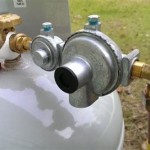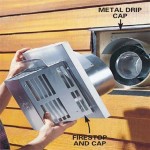Gas Fireplace Log Burner Set: Enhancing Your Hearth Experience
Gas fireplace log burner sets offer a convenient and aesthetically pleasing alternative to traditional wood-burning fireplaces. These sets, designed to mimic the appearance of natural wood logs, employ natural gas or propane to generate heat and create a realistic flame display. This article provides a comprehensive overview of gas fireplace log burner sets, exploring their components, installation, operation, maintenance, and considerations for selecting the appropriate set for a given fireplace.
A typical gas fireplace log burner set comprises several key components working in concert to provide a safe and efficient source of supplemental heat and visual appeal. These components include the burner, the logs themselves, a control valve regulating gas flow, a pilot light assembly facilitating ignition, and, in some cases, a remote control system for enhanced user convenience.
The burner is the heart of the system, responsible for mixing the gas with air and producing a controlled flame. It is typically constructed from durable materials such as stainless steel or cast iron, designed to withstand high temperatures and prolonged use. The design of the burner influences the flame pattern and the overall heating efficiency. Some burners are designed to produce taller, more dramatic flames, while others prioritize heat output and fuel efficiency.
The logs, crafted from ceramic or refractory cement, are meticulously molded and painted to replicate the authentic look of natural wood. These logs are strategically positioned atop the burner to distribute the flame and create a visually convincing fire. The arrangement of the logs, along with their size and shape, significantly contributes to the realism of the fire. Some high-end sets feature logs that are internally lit with LED lighting to further enhance the glowing ember effect, especially when the gas flame is set to a lower output.
The control valve regulates the flow of gas to the burner, allowing the user to adjust the flame height and heat output. This valve is typically accessible and easy to operate, providing precise control over the fire. Safety features are often incorporated into the control valve, such as a fail-safe mechanism that automatically shuts off the gas supply in the event of a pilot light failure.
The pilot light assembly is a small, continuously burning flame that ignites the main burner when the control valve is opened. The pilot light is essential for ensuring reliable and consistent ignition. Some sets incorporate electronic ignition systems that eliminate the need for a constantly burning pilot light, conserving energy and reducing gas consumption.
Remote control systems offer added convenience, allowing the user to adjust the flame height, turn the fire on or off, and even set timers from a distance. These systems often include safety features such as lockout mechanisms to prevent accidental activation, particularly important in households with children or pets.
Understanding Venting Options for Gas Fireplace Log Sets
Venting is a critical aspect of gas fireplace log burner set installation, as it ensures the safe and efficient removal of combustion byproducts from the living space. There are two primary venting options: vented and vent-free (also known as ventless). The choice between these options depends on the existing fireplace configuration, building codes, and personal preferences.
Vented gas log sets require a fully functioning chimney that can effectively exhaust the combustion gases to the outside. These sets produce a more realistic flame appearance and generate more heat than vent-free options. However, they also require proper chimney maintenance and inspection to ensure safe and efficient operation. A blocked or poorly maintained chimney can lead to carbon monoxide buildup, posing a serious health hazard.
Vent-free gas log sets, on the other hand, do not require a chimney or vent. These sets burn gas more efficiently and release minimal amounts of combustion byproducts into the room. They are equipped with oxygen depletion sensors (ODS) that automatically shut off the gas supply if the oxygen level in the room falls below a safe threshold. While vent-free sets offer greater installation flexibility, they may not produce as realistic a flame appearance as vented sets and may be subject to local building code restrictions. Careful consideration must be given to room size and ventilation when using a vent-free set to ensure adequate air circulation and prevent the buildup of moisture and other pollutants.
The selection of a vented or vent-free set should be based on a thorough assessment of the existing fireplace and adherence to all applicable building codes and safety regulations. Consulting with a qualified HVAC professional or fireplace installer is highly recommended to ensure a safe and compliant installation.
Installation Considerations and Safety Precautions
Proper installation is paramount for the safe and efficient operation of a gas fireplace log burner set. While some homeowners may be tempted to undertake the installation themselves, it is strongly advised to engage a qualified professional who possesses the necessary expertise and experience to ensure compliance with all applicable codes and safety standards. Incorrect installation can lead to gas leaks, carbon monoxide poisoning, and other serious hazards.
Before installation, the fireplace should be thoroughly inspected and cleaned. Any debris, soot, or creosote should be removed to ensure proper ventilation and prevent fire hazards. The chimney, if applicable, should be inspected for cracks, obstructions, and other damage. Any necessary repairs should be completed before installing the gas log set.
The gas line should be properly sized and connected to the gas log set according to the manufacturer's instructions. A qualified plumber should perform this connection to ensure a leak-free and secure installation. Gas leak detectors should be installed in the vicinity of the fireplace to provide an early warning in the event of a gas leak.
After installation, the gas log set should be thoroughly tested to ensure proper operation and to verify that there are no gas leaks. The pilot light should be lit and allowed to burn for several minutes to ensure stable ignition. The flame height should be adjusted to the desired level, and the remote control, if applicable, should be tested to ensure proper functionality.
It is crucial to educate all members of the household on the proper operation and safety precautions associated with the gas fireplace log burner set. This includes understanding how to operate the control valve, how to recognize the signs of a gas leak, and what to do in the event of an emergency. Regular maintenance, such as cleaning the burner and logs, is also essential for ensuring continued safe and efficient operation.
Maintenance and Troubleshooting of Gas Fireplace Log Sets
Regular maintenance is crucial for ensuring the longevity and optimal performance of a gas fireplace log burner set. Neglecting maintenance can lead to reduced efficiency, increased safety risks, and costly repairs. While a professional inspection and cleaning are recommended annually, homeowners can perform several routine maintenance tasks to keep their gas log set in good working order.
One of the most important maintenance tasks is cleaning the burner and logs. Over time, dust, soot, and other debris can accumulate on these components, affecting the flame pattern and reducing heat output. The burner can be cleaned with a soft brush or vacuum cleaner. The logs can be wiped down with a damp cloth, but harsh chemicals or abrasive cleaners should be avoided as they can damage the finish.
The pilot light should be inspected regularly to ensure that it is burning cleanly and consistently. A weak or flickering pilot light may indicate a clogged orifice or a problem with the gas supply. The pilot light orifice can be cleaned with a small wire or needle. If the problem persists, a qualified technician should be consulted.
The gas line and connections should be inspected periodically for leaks. A simple soap and water solution can be used to check for leaks. Apply the solution to the connections and look for bubbles. If bubbles are present, there is a gas leak, and the gas supply should be shut off immediately. A qualified plumber should be called to repair the leak.
Common problems encountered with gas fireplace log sets include pilot light failure, burner ignition issues, and gas leaks. Pilot light failure can be caused by a clogged orifice, a faulty thermocouple, or a draft extinguishing the flame. Burner ignition problems can be caused by a dirty burner, a malfunctioning igniter, or a low gas supply. Gas leaks can be caused by loose connections, damaged gas lines, or a faulty control valve.
Troubleshooting these problems often requires a combination of visual inspection, diagnostic testing, and basic mechanical skills. However, for complex issues or suspected gas leaks, it is always best to consult with a qualified technician who has the expertise and equipment to diagnose and repair the problem safely and effectively. Regular maintenance and prompt attention to any potential problems can help to ensure the safe and reliable operation of your gas fireplace log burner set for years to come.
Selecting a gas fireplace log burner set involves considering several factors, including the size of the fireplace, the desired heat output, the venting options available, and the aesthetic preferences of the homeowner. A thorough assessment of these factors will help ensure that the chosen set is appropriate for the specific application and provides a safe, efficient, and visually appealing heating solution.

Napoleon Fiberglow 30 Gas With Burner Log Sets Gl30ne North Country Fire

White Mountain Hearth Lprxx V Er Kit Pioneer Refractory Complete Fireplace Gas Log Set

Napoleon Fiberglow 30 Gas With Burner Log Sets Gl30ne North Country Fire

Grand Canyon Quaking Aspen Double Sided Vented Gas Log Set With Stainless Steel Burner

White Mountain Hearth Vfdtxx Flint Hill Ceramic Fiber Gas Log Set With Ventless Burner And Thermostat

Napoleon Fiberglow 30 Gas With Burner Log Sets Gl30ne North Country Fire

24 Giant Timbers Concrete Indoor Gas Log Set Vent Free With Mega Flame Burner Mnf24i Lmf24gt F2099a F2099b

Procom 24 In Vented Natural Gas Fireplace Log Set Wan24n 2 The Home Depot

Majestic 6 Piece Refractory Cement With Burner Gas Log Sets Vdy30d3r North Country Fire

Hargrove Mountain Timber Vented Large Gas Log Set With Ember Supreme Burner Kit Natural Only
Related Posts








